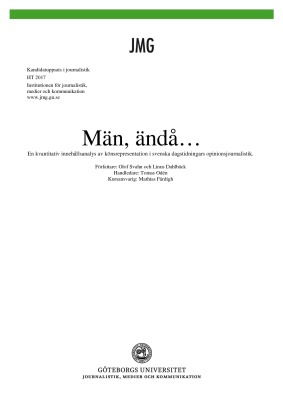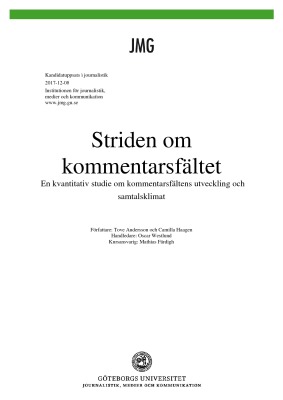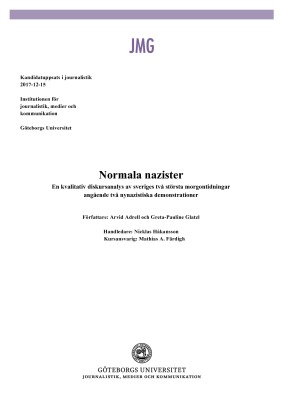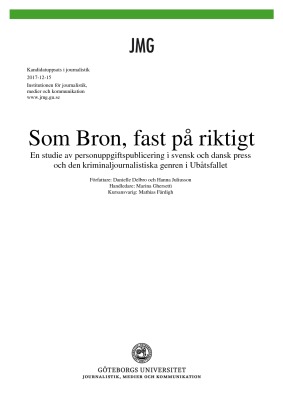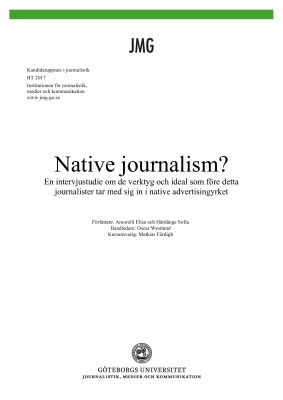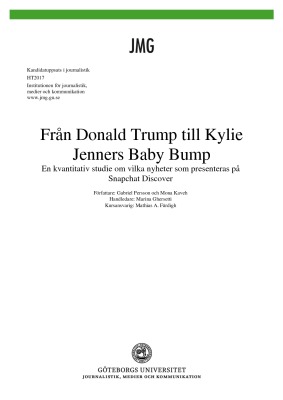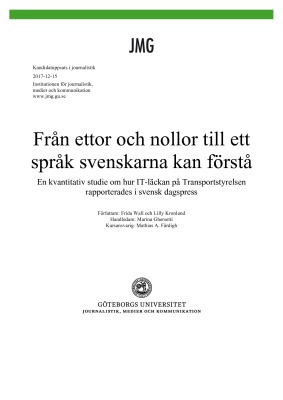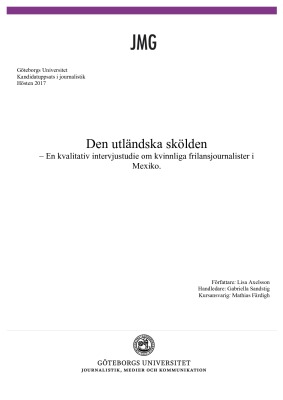Abstract
Title: Män, ändå… – En kvantitativ innehållsanalys av könsrepresentation i svenska dagstidningars opinionsjournalistik.
Authors: Olof Svahn and Linus Dahlbäck.
Subject: Undergraduate research paper in journalism studies, Dept. of journalism, media and communication (JMG) Gothenburg University.
Term: Autumn 2017.
Supervisor: Tomas Odén, JMG, Gothenburg University.
Pages/words: 53 pages / 15 260 words.
Purpose: How are men and women represented in the opinion journalism of some Swedish newspapers? This is the central and most important question for this study, and it serves as the foundation for the study’s purpose. To investigate the distribution of men and women in opinion journalism we applied gender theory; specifically male-normative structures and
gender typing. Other aspects that were investigated were to what extent male and female journalists write about different subjects, and/or about men and women.
Method: Quantitative content analysis.
Procedure: 992 articles from 15 daily newspapers were coded and analysed from the perspective of gender theory and media and democracy theory.
Results: The distribution of men and women in the opinion journalism of some of Sweden’s newspapers is uneven, with 65 per cent of writers being men and 35 per cent being women.
Our results also point to gender typing, where men tend to write about subjects like politics, finance, and sports. On the contrary, women wrote more about social questions and health care, education and caring. Both men and women tended to write more about their own gender; however women wrote more frequently about men than men did about women.
Key Words: Opinionsjournalistik; Jämställdhet; Ledare; Krönika; Könsmärkning; Kvantitativ Innehållsanalys; Dagstidningar; Kvällstidningar; Lokaltidningar; Opinion Journalism; Gender Typing; Quantitative Content Analysis.
